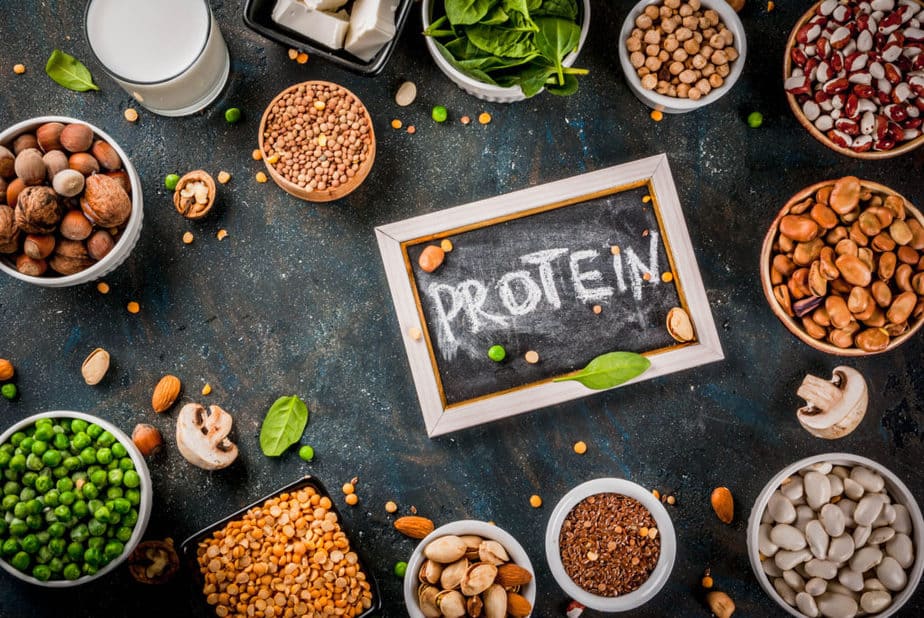
Hey Vegetarians and Vegans: It’s Time to Debunk the Protein Combining Myth
Share
Back when I first went vegetarian and then vegan, Diet for a Small Planet was the book to read. At that time, author Francis Lappe included information in her book about how plants provide incomplete proteins and how vegetarians and vegans need to combine proteins at each meal to ensure we’re getting a “complete” protein.
This was commonly considered true at the time. It was being taught in health and nutrition classes and in medical schools, so it makes sense that Lappe would mention it in her book. I also learned about protein combining in a freshman year nutrition class in college. In more recent editions of Diet for a Small Planet, Lappe says correctly that there’s no need to worry about eating complementary proteins, as long as you’re eating enough calories.
Protein combining is all about amino acids. The idea is that plant-based proteins don’t provide all of the essential amino acids, so you need to eat combinations of plant-based protein sources to make up the complete set. It’s like Pokemon, but with amino acids: “Gotta catch ‘em all.” But, that’s not really how it works.
It’s true that some plant-based foods are missing an amino acid here and there. What isn’t true is that you need to combine plant-based proteins carefully to avoid deficiency. Your body stores amino acids, so if you eat whole grains at breakfast and beans at lunch, you’re good. In fact, as long as you’re eating a variety of plant-based protein sources, you’re good. And pretty much all plants provide protein.
Unfortunately, this myth is still common, even in the medical community. Jeff Novick, MS, RD, describes teaching a recent nutrition course where a medical resident told him that protein combining was covered in one of her current textbooks.
It turns out that the myth of protein combining has even deeper roots than the book that popularized the idea. It goes all the way back to a 100-year-old study of rats. Here’s Dr. Michael Greger talking about how this idea got started and what we know now about plant-based protein.
You don’t have to eat beans and rice together to stay healthy. As long as you’re eating a variety of foods, you don’t need to worry about complementary proteins on a vegan diet at all. Your body is smarter than that.
The other concern when it comes to plant-based protein is that vegans and vegetarians don’t get enough. Luckily, I’ve noticed that this myth seems to be on the decline. It’s so easy to hit your protein requirements while eating a plant-based diet.
This was commonly considered true at the time. It was being taught in health and nutrition classes and in medical schools, so it makes sense that Lappe would mention it in her book. I also learned about protein combining in a freshman year nutrition class in college. In more recent editions of Diet for a Small Planet, Lappe says correctly that there’s no need to worry about eating complementary proteins, as long as you’re eating enough calories.
Protein combining is all about amino acids. The idea is that plant-based proteins don’t provide all of the essential amino acids, so you need to eat combinations of plant-based protein sources to make up the complete set. It’s like Pokemon, but with amino acids: “Gotta catch ‘em all.” But, that’s not really how it works.
It’s true that some plant-based foods are missing an amino acid here and there. What isn’t true is that you need to combine plant-based proteins carefully to avoid deficiency. Your body stores amino acids, so if you eat whole grains at breakfast and beans at lunch, you’re good. In fact, as long as you’re eating a variety of plant-based protein sources, you’re good. And pretty much all plants provide protein.
Unfortunately, this myth is still common, even in the medical community. Jeff Novick, MS, RD, describes teaching a recent nutrition course where a medical resident told him that protein combining was covered in one of her current textbooks.
It turns out that the myth of protein combining has even deeper roots than the book that popularized the idea. It goes all the way back to a 100-year-old study of rats. Here’s Dr. Michael Greger talking about how this idea got started and what we know now about plant-based protein.
You don’t have to eat beans and rice together to stay healthy. As long as you’re eating a variety of foods, you don’t need to worry about complementary proteins on a vegan diet at all. Your body is smarter than that.
The other concern when it comes to plant-based protein is that vegans and vegetarians don’t get enough. Luckily, I’ve noticed that this myth seems to be on the decline. It’s so easy to hit your protein requirements while eating a plant-based diet.
